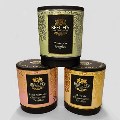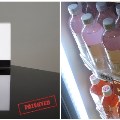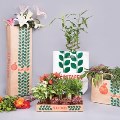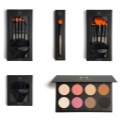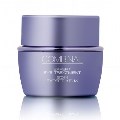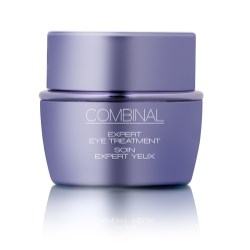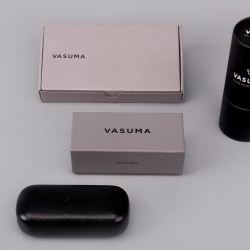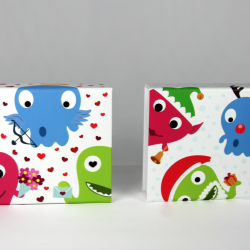Public
Swedbrand Ltd Documents
Swedbrand Ltd Gallery
Swedbrand Ltd Links - Innovations
Swedbrand Ltd Locations
Swedbrand Ltd News
If this is your company, CONTACT US to activate Packbase™ software to build your portal.


More than 3,400,000,000 people worldwide own a smartphone. By 2021, that figure is expected to double. It is no wonder, then, that there is a revolution going on in the world of interactive packaging, with more and more brands and packaging designers establishing a connection between packaging and the consumer via the Internet.
Today’s consumer wants to be engaged, informed, and entertained by the brands with which they do business. Paperboard packaging has been able to facilitate these important marketing functions with its flat, printed surfaces that are well suited to deliver cutting-edge interactive product information, in-store sales, entertaining games, and more.
The most ubiquitous of these technologies is the QR (Quick Response) code. Seen on packaging, commercial publications, and even on T-shirts, these codes send consumers to a product or company’s website or social media page once scanned via a mobile app. However, lately there has been much debate as to whether consumers actually glean value from QR codes. In fact, many pundits suggest that QR codes are a dying technology as they are complicated and inconvenient to use.
Today, consumers simply aren’t willing to take the time to pull out their phone, open the app, take a photo, and wait for a website to load.
Although the fate of the QR code remains unclear, several new mobile technologies are going to overtake the interactive packaging market by streamlining the consumer experience. These technologies include:
Image Recognition
New image recognition apps such as Ricoh’s Clickable Paper and Google Goggles (an app that allows users to learn more about a location or product from a smartphone photo) allow for direct mobile interaction with a package, thereby eliminating the need for a separate scanable code that eats up precious branding space and distracts from a package’s design aesthetics.
After scanning a package with this technology, the consumer can access links to websites, video, charts, maps, blogs, shopping carts, product reviews, and other important data. Thus, unlike a QR code that only brings the consumer to a single website, these image recognition apps connect consumers to a wider variety of content.
Smart Inks
Touchcode has developed an invisible electronic code that is printed directly onto a package. By simply touching the encoded package with one’s smart device, the consumer’s screen comes alive with engaging product content. Again, this technology provides mobile interactivity without affecting package design. Furthermore, it is marketed as a way for consumers to verify the brand authenticity of the products they purchase.
Augmented Reality (AR)
Augmented Reality apps allow consumers to train their smartphone or tablet on a package and then view superimposed computer-generated images that provide additional information about the product. Consumers may even view images of the unboxed product before making a purchase.
Regardless of whether AR will gain enough traction to become commonplace in retail environments, it’s not hard to imagine a future in which AR plays an important role in shopping rituals. With a single glance, consumers wearing such a device could walk through a store and find the retail shelves alive with vibrant, three-dimensional images and compelling information.
Smart Packaging
Smart packaging consists of two distinct areas: active packaging, which provides functions such as moisture control, and intelligent packaging, which communicates product changes and other information. The pharmaceuticals industry is predicted be the fastest growing smart packaging market in the coming years, driven by the aging U.S. population, an increase in chronic diseases, and the expanding presence of temperature-sensitive drugs. For packaging, this means a growing need for anti-microbial and self-venting packaging solutions, as well as packaging that features time-temperature indicator labels.
Near-Field Communication (NFC)
Not as widely used in packaging, NFC is a term for an exchange of information between two devices. With this technology, an NFC chip is embedded into a package so when a consumer with a NFC-enabled smart device approaches, product information is automatically transmitted from the chip to the consumer’s phone. Although large amounts of data cannot be stored in the chip, it can provide simple information such as discount vouchers, website URLs, or email addresses.
NFC labels also sense whether packaging has been opened yet, and can be used for track-and-trace monitoring. Each NFC tag in the world is unique, having been encoded with an identifier that is impossible to copy or modify.
If everything goes as expected by the packaging industry, the number of connected products in the world will increase to 21 billion by 2020. Studies warn, however, that this will only happen on the condition that brands use interactive packaging design that creates added value and requires minimal effort on the consumers’ part.
Sources:
http://www.packaginginnovation.com/packaging-design/interactive-packaging/smart-fun-interactive-packaging-design-future/
http://technology.risiinfo.com/packaging-technology/north-america/industry-policy-management/beyond-qr-what-s-next-package-mobile-marketing
Read more Swedbrand blog posts at swedbrand-group.com/blog, or visit our website at swedbrand-group.com







